 There will come a time when a homeowner violates an association’s governing documents (i.e., CC&Rs, Rules & Regulations, Architectural Guidelines…etc). If there is a possibility those violations will be litigated, the association must have a proper trail of evidence to bolster their claims.
There will come a time when a homeowner violates an association’s governing documents (i.e., CC&Rs, Rules & Regulations, Architectural Guidelines…etc). If there is a possibility those violations will be litigated, the association must have a proper trail of evidence to bolster their claims.
Q: What are some types of violations that would need evidence?
A: Unapproved architectural improvements (i.e., walls, patio covers), failing to maintain property exterior in planned developments (i.e., shutters, paint, landscaping), inappropriate parking…etc.
Q: What should the association or its community manager do when there is this type of violation?
A: For these violations, the association’s community manager should clearly document in their written records: what the violation was, which governing documents provision was violated, who committed the violation, if known (e.g., an owner, guest, tenant), when the violation occurred (i.e., date and time), where the violation occurred, and anything else that might be relevant. Additionally, a photo of the violation should be taken on the date it occurred and reoccurred.
Q: How should the photo be taken?
A: The photo should be taken directly in front of the violation. There should be plenty of natural light to clearly see what type of violation it is. Flash should be utilized if it improves the picture quality. The photo should not be taken from within a vehicle because there will be light and color distortion; furthermore, the violation photo should not include portions of the vehicle. If there is a parking violation that occurs in the evening, any photos submitted by the association patrol vendor should be taken from the outside of a vehicle.
It is important that the photo be taken with a high-definition camera, if possible, so as to not be grainy or blurry. There should be no objects distracting from the violation (e.g., people, pets, vehicles).
Q: Why so particular about the violation photo and written evidence?
A: If the matter goes to litigation, the association will need to prove that a homeowner has committed the violation(s) alleged by the association. A judge will want to see actual physical photo evidence and clear documentation of the homeowner’s violation history. Without proper evidence, the association might have a hard time winning its case. If there is a clear violation history and evidence, the judge will be able to order the homeowner to correct the violations.
Even if the matter does not go to litigation, a proper trail of evidence will assist the association’s general counsel in dealing with the matter.
| The association should request that management take a photo of every violation if they wish to properly retain evidence and enforce their governing documents. Without a photo, no matter how big or small the violation, the homeowner can always argue that the association was mistaken, and the violation never occurred. It would be a case of “he said, she said” argument that would go nowhere—it would definitely not hold up in court. |
-Blog post authored by TLG Attorney, Vivian X. Tran, Esq.
 HOA Lawyer Blog
HOA Lawyer Blog


 It’s our privilege to welcome Pelican Ridge Community Association to Tinnelly Law Group’s growing family of HOA clients.
It’s our privilege to welcome Pelican Ridge Community Association to Tinnelly Law Group’s growing family of HOA clients.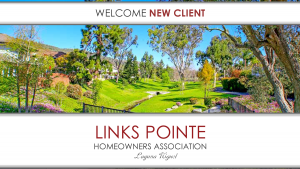 It’s our privilege to welcome Links Pointe Homeowners Association to Tinnelly Law Group’s growing family of HOA clients.
It’s our privilege to welcome Links Pointe Homeowners Association to Tinnelly Law Group’s growing family of HOA clients.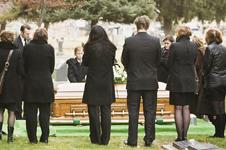 When a delinquent homeowner dies, there is a strict one-year statute of limitations to sue them or to continue a lawsuit against their estate. (Cal. Code Civ. Proc. § 366.2). This is true even if the statute of limitations would have been longer had the person survived. This harsh rule applies even if you did not know that the person died so Boards and management should take notice if a homeowner does not respond to communications or suddenly falls in arrears and then investigate further by contacting family members or emergency contacts during circumstances of non-responsiveness and/or extended non-payment.
When a delinquent homeowner dies, there is a strict one-year statute of limitations to sue them or to continue a lawsuit against their estate. (Cal. Code Civ. Proc. § 366.2). This is true even if the statute of limitations would have been longer had the person survived. This harsh rule applies even if you did not know that the person died so Boards and management should take notice if a homeowner does not respond to communications or suddenly falls in arrears and then investigate further by contacting family members or emergency contacts during circumstances of non-responsiveness and/or extended non-payment.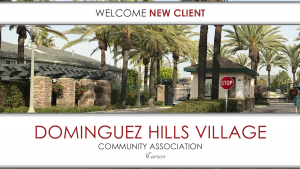 It’s our privilege to welcome Dominguez Hills Village Community Association to Tinnelly Law Group’s growing family of HOA clients.
It’s our privilege to welcome Dominguez Hills Village Community Association to Tinnelly Law Group’s growing family of HOA clients.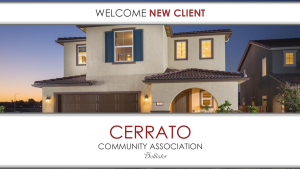 It’s our privilege to welcome Cerrato Community Association to Tinnelly Law Group’s growing family of HOA clients.
It’s our privilege to welcome Cerrato Community Association to Tinnelly Law Group’s growing family of HOA clients. The rising cost of electricity, environmental considerations, clean energy and tax savings, utility company programs designed to help alleviate the demand on the grid, and the proliferation of affordable residential solar energy systems have made solar power more popular than ever. Consequently, Associations are seeing a sharp rise in homeowner requests to install solar energy systems. This presents a particularly unique set of challenges for condominium developments because of their shared roofs and other similar common area components.
The rising cost of electricity, environmental considerations, clean energy and tax savings, utility company programs designed to help alleviate the demand on the grid, and the proliferation of affordable residential solar energy systems have made solar power more popular than ever. Consequently, Associations are seeing a sharp rise in homeowner requests to install solar energy systems. This presents a particularly unique set of challenges for condominium developments because of their shared roofs and other similar common area components. In case you missed it,
In case you missed it, 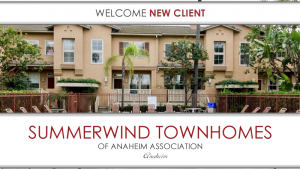 It’s our privilege to welcome Summerwind Townhomes of Anaheim Association to Tinnelly Law Group’s growing family of HOA clients.
It’s our privilege to welcome Summerwind Townhomes of Anaheim Association to Tinnelly Law Group’s growing family of HOA clients.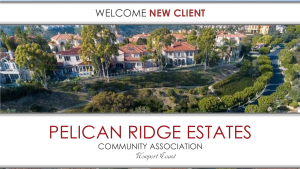 It’s our privilege to welcome Pelican Ridge Estates Community Association to Tinnelly Law Group’s growing family of HOA clients.
It’s our privilege to welcome Pelican Ridge Estates Community Association to Tinnelly Law Group’s growing family of HOA clients.